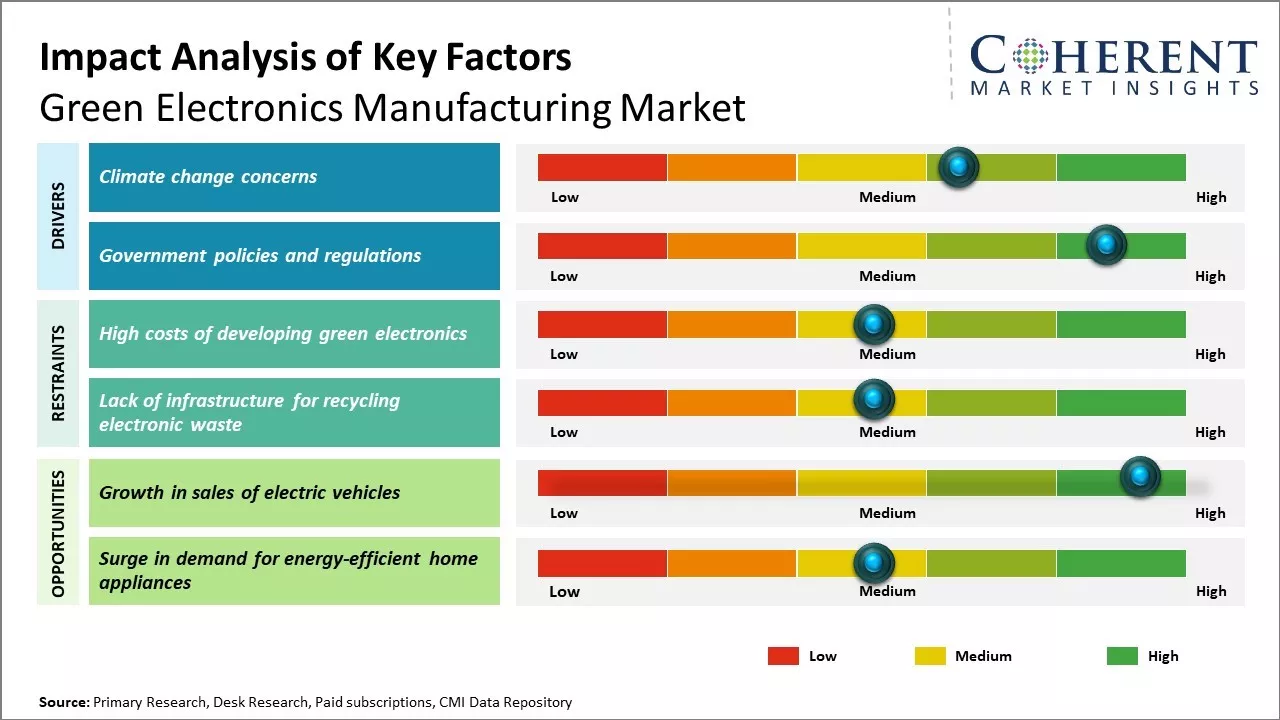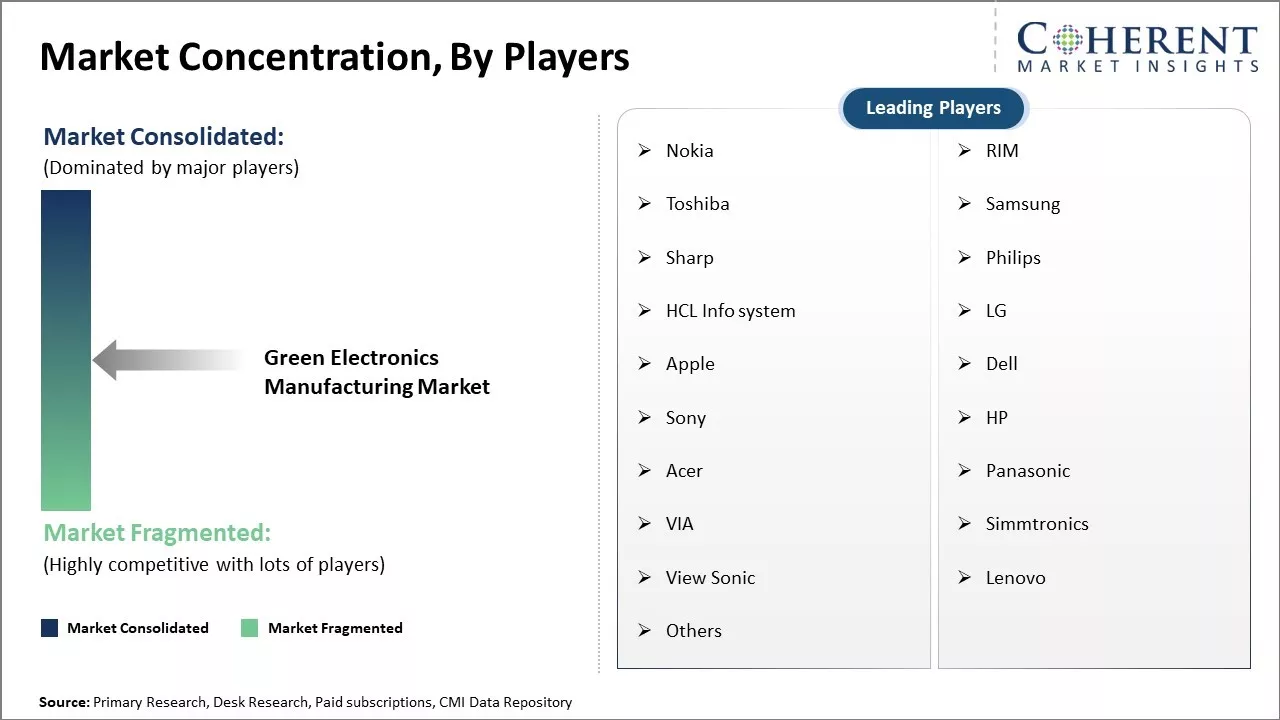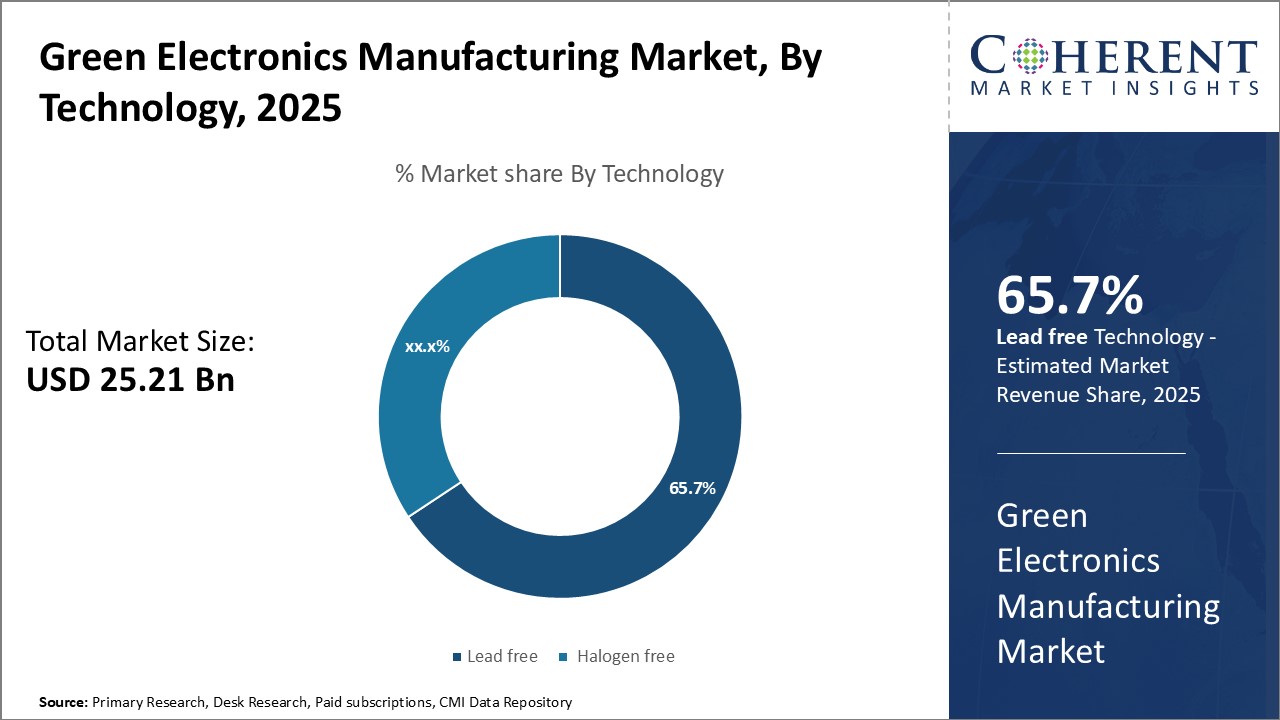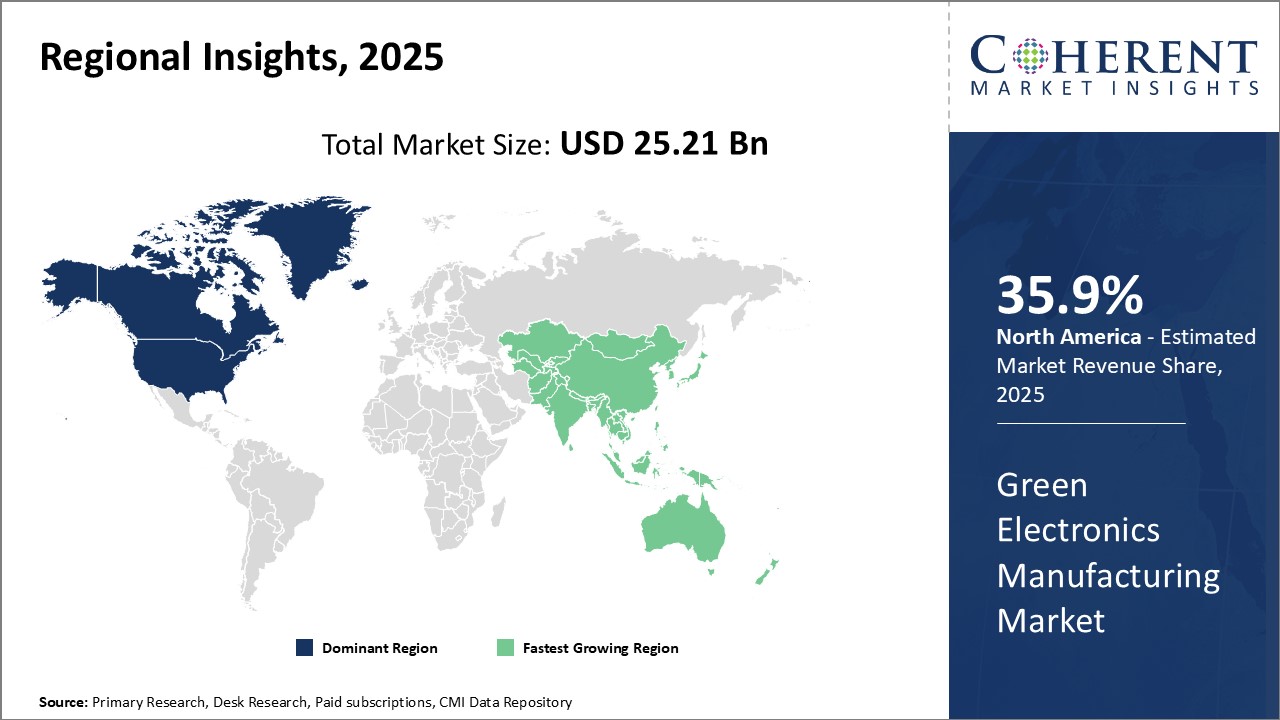Green Electronics Manufacturing Market Size and Trends
The green electronics manufacturing market is estimated to be valued at US$ 25.21 Bn in 2025 and is expected to reach US$ 125.78 Bn by 2032, growing at a compound annual growth rate (CAGR) of 25.8% from 2025 to 2032.

Discover market dynamics shaping the industry: Download Free Sample
Factors such as increasing consumer awareness about environmental hazards of electronic manufacturing and disposal, stringent government regulations regarding carbon emissions and electronics waste, and growing demand for eco-friendly consumer electronics are expected to drive growth in the green electronics manufacturing market.
Major electronics brands are increasingly adopting greener manufacturing practices such as use of renewable energy, recyclable and sustainable materials, energy-efficient production processes, and take-back programs for waste collection to reduce their environmental footprint as well as appeal to conscious customers.
This trend is expected to continue and more companies are anticipated to shift towards sustainable alternatives, thus supporting the market's positive outlook over the next few years.
Climate change concerns
As climate change has emerged as one of the most pressing issues faced by humanity, there is a growing global movement towards more environmentally sustainable practices across all industries. Consumer awareness about the environmental impact of electronics manufacturing and disposal has been increasing steadily. Many consumers are now actively seeking out "green" electronics options that are produced using renewable energy and non-toxic, recyclable materials. Manufacturers are facing pressure to optimize their processes and cut down on emission of greenhouse gases and electronic waste. Going green is not just about sustainability anymore but has become crucial for their brand image and market leadership. Transitioning to renewable energy sources, recycling older components, reducing packaging waste are some of the priority areas that green electronics manufacturers are focusing on. Some are investing in closed-loop manufacturing facilities that allow reuse of materials within the system to minimize external waste. As environmental regulations get stricter with time, those who integrate sustainable practices early will have a significant competitive advantage in the future.
Market Concentration and Competitive Landscape

Get actionable strategies to beat competition: Download Free Sample
Government policies and regulationsMajor electronics manufacturing markets like Europe and China have been introducing stringent policies to curb pollution and transition towards clean energy sources. Many countries have set targets to get a significant portion of their energy from renewables in the coming decades. They are also implementing a directives that make brands responsible for recycling the products after end of life. This puts the onus of sustainable design and resource recovery on manufacturers. Industries that do not synchronize with the sustainability agenda of governments risk getting hit with heavy penalties and trade barriers in the long run. Green electronics manufacturers are proactively making changes to comply with evolving standards. For example, they may shift to water-based adhesives instead of toxic ones to meet new chemical emission limits. Some are even collaborating with policymakers to establish mutually agreeable regulations and invest in building local renewable energy and recycling infrastructure. By proactively future-proofing themselves, green electronics brands are hoping to get political as well as consumer favor.
Key Takeaways of Analyst:
The green electronics manufacturing market is expected to experience significant growth over the next decade. Driven by stringent government regulations worldwide aimed at reducing pollution and curbing carbon emissions from electronic products. Rising consumer demand for eco-friendly gadgets will further fueladoption of greener manufacturing practices among electronics brands. Another major factor propelling this industry is growing environmental consciousness among corporate giants who are committed to lowering their carbon footprint. Cost optimization through recycling and efficient energy utilization in plants are some key opportunities for electronics manufacturers in this evolving space.
North America currently dominates green electronics production owing to proactive policies supporting cleantech innovation. However, Asia Pacific is emerging as the fastest growing regional market with China spearheading the shift towards sustainability in domestic hi-tech clusters. Ethical and environment-friendly credentials are fast gaining prominence as important brand differentiation factors. Some restraints involve high capital expenditure for deploying pollution abatement technologies and dependence on renewable sources of energy in manufacturing.
In light of impending carbon regulations and sustainability being hotly debated globally, green electronics will become increasingly vital for reputation management and license to operate in the future. Overall, as climate change risks intensify, eco-design principles and cleaner manufacturing are inevitable industry trends that electronics brands must proactively plan for to remain relevant.
Market Challenges: High costs of developing green electronics
Manufacturers need to switch to using renewable and cleaner sources of energy in operations that require significant investments. Strict environmental regulations around the world are increasing compliance costs. There is also a lack of standards in many areas such as measuring carbon footprint which makes it difficult for vendors to communicate their green efforts.
Market Opportunities: Lack of infrastructure for recycling electronic waste
More companies and consumers are prioritizing sustainability which is increasing demand for green electronics. Early adopters of green and eco-friendly practices can gain a competitive edge. Governments in several countries provide incentives like tax rebates to companies investing in energy efficiency and waste reduction technologies. Growing electronics industry also means increased need for sustainable manufacturing processes.

Discover high revenue pocket segments and roadmap to it: Download Free Sample
Insights By Technology - Growing regulations to reduce hazardous materialsIn terms of technology, lead free contributes the highest share of the market. The segment is expected to account for 65.7% of the market share in 2025 due to growing environmental regulations to reduce the usage of hazardous materials like lead in electronics. Lead free solder alloys are now mandated for many electronics applications due to strict laws restricting the use of lead. Many countries have adopted the Restriction of Hazardous Substances (RoHS) directive that bans lead and other toxic materials in electrical products. This has generated huge demand for lead-free solutions from electronics manufacturers. Additionally, consumer awareness about health hazards of lead exposure is increasing and they increasingly prefer green electronics that do not use lead and other heavy metals. Furthermore, major electronics brands are committed to completely eliminating hazardous substances from their product portfolio, which is anticipated to further propel the adoption of lead free solders and alloys.
Insights By Services - Increased outsourcing of electronics manufacturing services
In terms of services, electronics manufacturing services contributes the highest share of the market. This segment is expected to hold 35% of the market share in 2025 due to increased outsourcing of electronics manufacturing requirements by OEMs and component suppliers. The electronic manufacturing services (EMS) market plays a critical role in the green electronics value chain by delivering comprehensive turnkey solutions. They help brands shift focus to their core competencies like design and marketing while leveraging dedicated EMS providers for manufacturing. The high capital expenditure and rapidly changing technology cycles make it difficult for many organizations to establish and continuously upgrade in-house manufacturing facilities. This has boosted demand for optimal outsourcing to specialized EMS firms that can offer green manufacturing technologies, economies of scale and geographical diversification. Furthermore, EMS providers provide expertise in printed circuit board assembly, precision machining, box build services and new product introduction support using lead-free and eco-friendly processes.
Insights By Industry- Government initiatives for green consumer electronics
In terms of industry, consumer electronics contributes the highest share of the market. This segment is expected to account for 30.2% of the market share in 2025 driven by various government initiatives and directives to promote green consumer products. Energy efficiency standards laid down by organizations like the United States Environmental Protection Agency (EPA) have pushed OEMs to integrate more sustainable and less toxic materials in smartphones, laptops, televisions and white goods. Many nations offer financial incentives and subsidies for electronics that meet stringent regulations on hazardous waste recycling and materials restriction. Regulatory drives to extend product lifespan through repairs and upgrades have also boosted green design of consumer devices. Furthermore, growing environmental consciousness among individuals has increased demand for electronic goods containing less pollutants and packaged more sustainably using recycled content. This has accelerated the green transformation of the fast-evolving consumer electronics industry.
Regional Insights

Need a Different Region or Segment? Download Free Sample
North America has established itself as the dominant region in the global green electronics manufacturing market. The region is expected to account for 35.9% of the market share in 2025. The presence of major electronics brands and manufacturers such as Apple, Dell, and HP has given the region an edge over others. Many of these companies have set up separate divisions focusing solely on developing eco-friendly products. Wide acceptance and popularity of these green electronics products among consumers in the region has driven their market share. Further, supportive government policies promoting renewable energy and initiatives like Electronic Product Environmental Assessment Tool (EPEAT) have encouraged manufacturers to invest more in sustainable manufacturing facilities. This has significantly boosted domestic production of green electronics over the last decade. The region also dominates in exports of these products to other key markets owing to early adoption and strong brand recognition.
The Asia Pacific region has emerged as the fastest growing market for green electronics manufacturing globally. Rapid industrialization and growth of electronics industry across developing countries like China, India, Indonesia, and Vietnam has surged the demand. Uptake of new technologies by digital consumers in the region has raised the need for eco-friendly alternatives as well. Rising export-oriented manufacturing bases along with availability of cheap labor and resources have attracted leading global brands to set up green electronics production units. This has majorly spurted the regional market size. Many local and regional electronics brands are also leveraging on growing environmental concerns and introducing sustainable products. This has provided further impetus to the nascent but quickly advancing market. The open trade policies and accessibility to wider consumer base make Asia Pacific an attractive destination for exports as well. With supportive regulations and initiatives expected to strengthen, the region is well positioned to dominate the future global market landscape over the coming years.
Market Report Scope
Green Electronics Manufacturing Market Report Coverage
| Report Coverage | Details | ||
|---|---|---|---|
| Base Year: | 2024 | Market Size in 2025: | USD 25.21 Bn |
| Historical Data for: | 2020 To 2024 | Forecast Period: | 2025 To 2032 |
| Forecast Period 2025 to 2032 CAGR: | 25.8% | 2032 Value Projection: | USD 125.78 Bn |
| Geographies covered: |
|
||
| Segments covered: |
|
||
| Companies covered: |
Nokia, RIM, Toshiba, Samsung, Sharp, Philips, HCL Info system, LG, Apple, Dell, Sony, HP, Acer, Panasonic, VIA, Simmtronics, View Sonic, and Lenovo |
||
| Growth Drivers: |
|
||
| Restraints & Challenges: |
|
||
Uncover macros and micros vetted on 75+ parameters: Get instant access to report
Green Electronics Manufacturing Industry News
- In January 2022, Samsung Electronics. a South Korean multinational major appliance and consumer electronics corporation stated its aim to power all its factories, offices, and data centers in the U.S., Europe, and China with 100% renewable energy by 2025
- In December 2021, Apple Inc. an American multinational corporation unveiled a new initiative to remove more carbon from the atmosphere than the company generates. This includes a US$200 million fund dedicated to investing in forestry projects.
- In October 2021, LG Electronics, a core company of South Korean conglomerate LG group declared its commitment to achieving carbon neutrality by 2030, aiming for a 50% reduction in greenhouse gas emissions compared to 2020 levels
- In September 2021, Dell Technologies, an American multinational technology company introduced its new sustainability strategy, Progress Made Real: 2030, which sets goals to halve greenhouse gas emissions, transition to 100% recycled or renewable materials in products by 2030, and promote the circular economy
*Definition: The green electronics manufacturing market involves companies that manufacture electronics and electrical equipment using processes and materials that generate less waste and pollution during production. They focuses on using renewable and recycled materials, minimizing greenhouse gas emissions, conserving energy and water during production, and designing products that are non-toxic, energy-efficient and easy to disassemble, reuse and recycle at end of life. The goal of this market is to produce electronics in a more sustainable and environmentally-friendly manner.
Market Segmentation
- Technology Insights (Revenue, US$ BN, 2020 - 2032)
- Lead free
- Halogen free
- Service Insights (Revenue, US$ BN, 2020 - 2032)
- Electronics Manufacturing Services
- Engineering Services
- Test & Development Implementation
- Logistics Service
- Others
- Industry Insights (Revenue, US$ BN, 2020 - 2032)
- Consumer Electronics
- Automotive
- Heavy Industrial Manufacturing
- Aerospace and Defense
- Healthcare
- IT and Telecom
- Others
- Regional Insights (Revenue, US$ BN, 2020 - 2032)
- North America
- U.S.
- Canada
- Latin America
- Brazil
- Argentina
- Mexico
- Rest of Latin America
- Europe
- Germany
- U.K.
- France
- Italy
- Russia
- Rest of Europe
- Asia Pacific
- China
- India
- Japan
- Australia
- South Korea
- ASEAN
- Rest of Asia Pacific
- Middle East & Africa
- GCC Countries
- South Africa
- Rest of Middle East & Africa
- North America
- Key Players Insights
- Nokia
- RIM
- Toshiba
- Samsung
- Sharp
- Philips
- HCL Info system
- LG
- Apple
- Dell
- Sony
- HP
- Acer
- Panasonic
- VIA
- Simmtronics
- View Sonic
- Lenovo
- Others
Share
Share
About Author
Ankur Rai is a Research Consultant with over 5 years of experience in handling consulting and syndicated reports across diverse sectors. He manages consulting and market research projects centered on go-to-market strategy, opportunity analysis, competitive landscape, and market size estimation and forecasting. He also advises clients on identifying and targeting absolute opportunities to penetrate untapped markets.
Missing comfort of reading report in your local language? Find your preferred language :
Transform your Strategy with Exclusive Trending Reports :
Frequently Asked Questions
EXISTING CLIENTELE
Joining thousands of companies around the world committed to making the Excellent Business Solutions.
View All Our Clients
